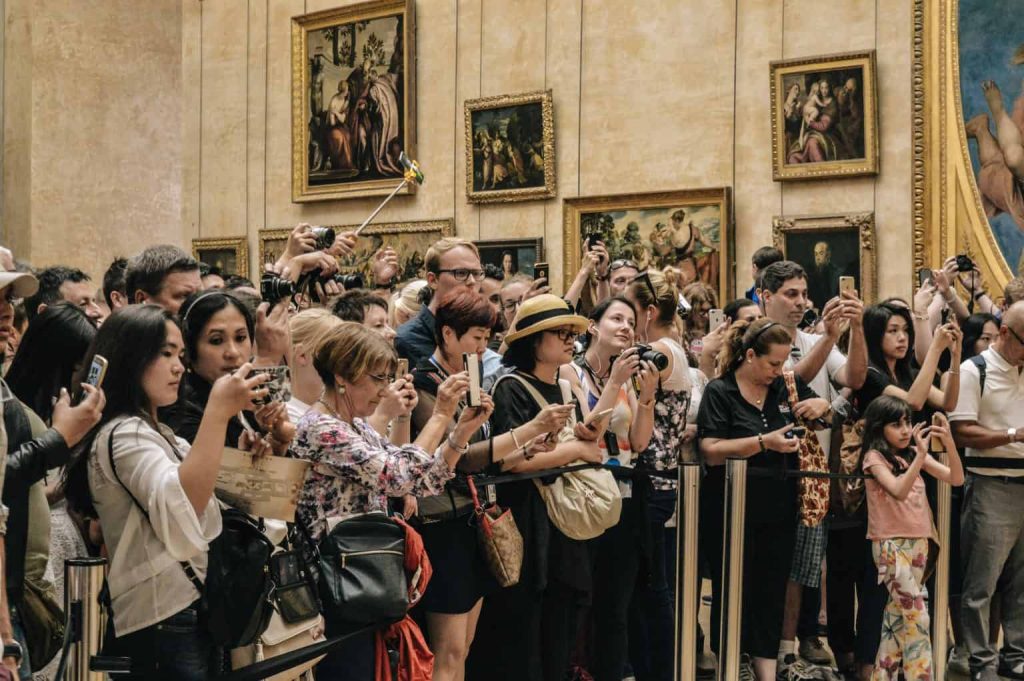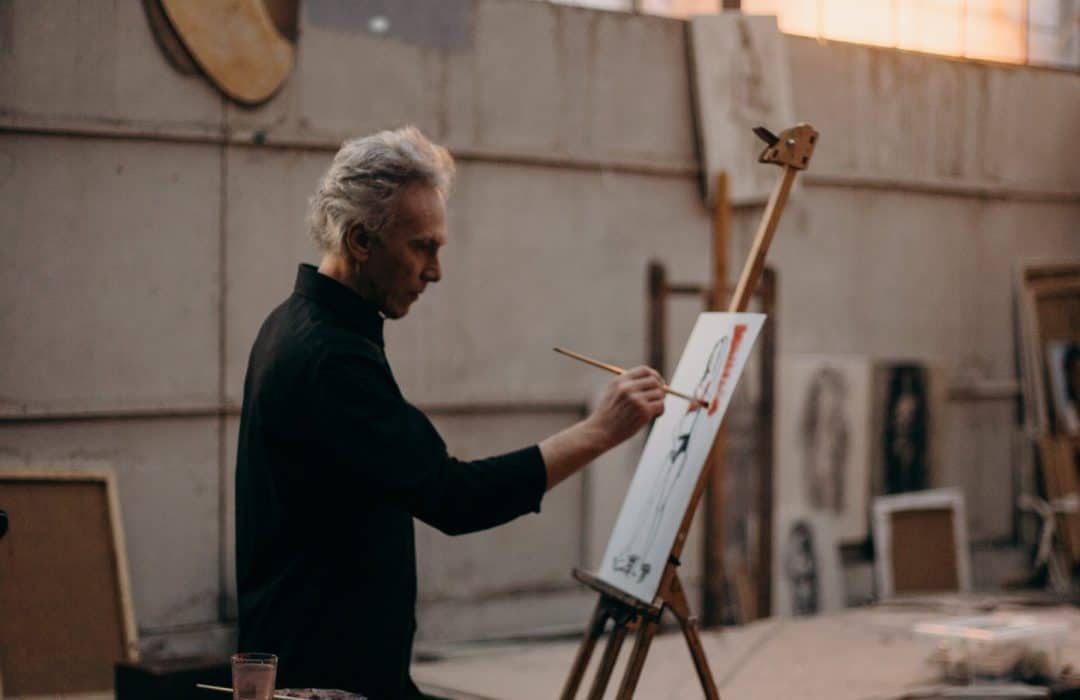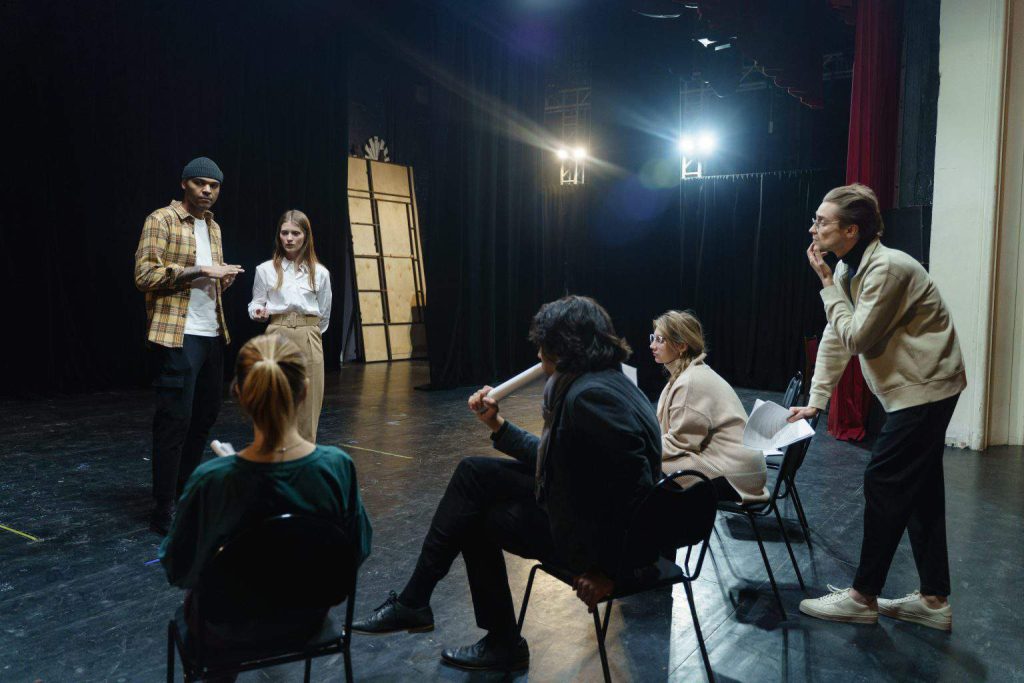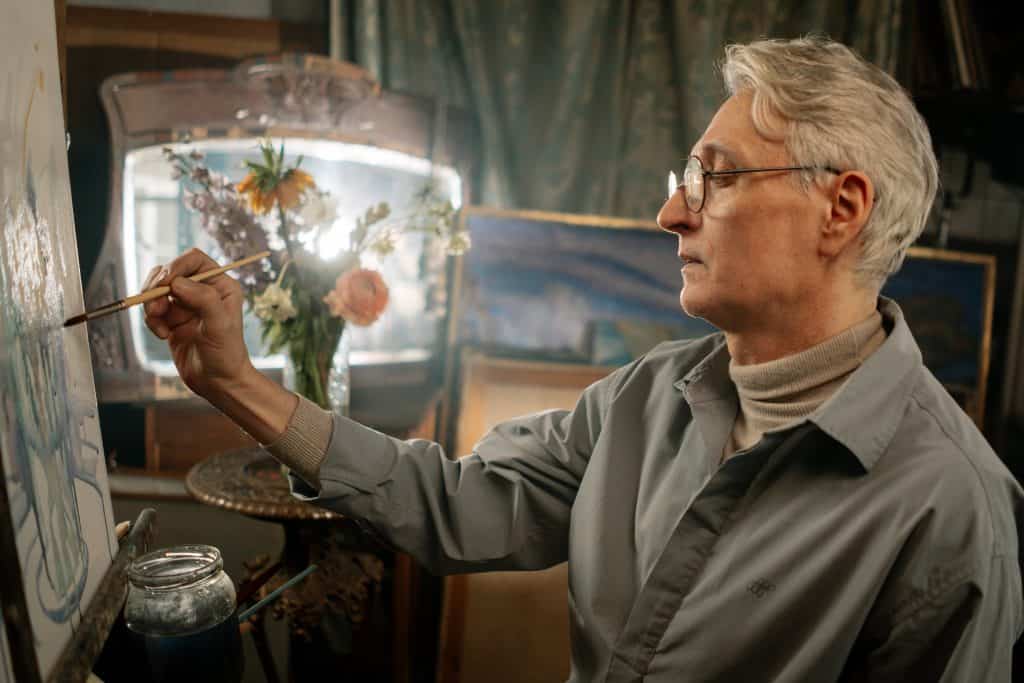
21 Jan Key Figures in Global Art Dialogue
The global art conversation is a dynamic force that reshapes traditional creative limits by extending beyond geographical and cultural barriers. With their ability to address global concerns, push the boundaries of conventional art forms, and create cross-cultural relationships, artists and curators have emerged as key figures in this shift. These powerful people do more than just produce or curate art; they act as global bridge builders, igniting a wider dialogue. By uniting disparate viewpoints and promoting a common appreciation for the global language of art, their work serves as a bridge. Through their efforts, individuals add to a continuing story that questions conventions, fosters comprehension, and captures the changing fabric of our linked global society.
Challenges and Opportunities

Photo by Alicia Steels
Within the vast expanse of the global art scene, a complex interplay of challenges and opportunities unfolds. The increased accessibility to the exchange of ideas and artistic influences has undeniably expanded the horizons of creativity. However, this newfound connectivity also demands a nuanced approach as artists and creators navigate through the diverse cultural landscapes. Sensitivity and understanding become crucial elements in this intricate dance, as the richness of each cultural context necessitates a respectful engagement to truly appreciate and integrate its essence into the broader artistic conversation.
Amidst these challenges, a profound dialogue emerges, opening doors for cross-cultural collaboration that enriches the global art narrative. The convergence of diverse voices and perspectives creates a vibrant tapestry, illustrating the multifaceted nature of contemporary artistic expression. The collaborative exchange of ideas not only enhances the creative process but also contributes to the global discourse on art, fostering a deeper understanding of the shared human experience. In embracing the challenges and opportunities presented by the global art scene, artists and creators participate in a collective effort to weave a more inclusive, interconnected, and culturally resonant artistic landscape.
Artists

Photo by cottonbro studio
Pioneering Cross-Cultural Exchange
Frida Kahlo (Mexico)
Frida Kahlo, a trailblazing artist from Mexico, has left an indelible mark on the art world through her surrealist self-portraits. Born in 1907, her life was marked by both physical and emotional pain, which she vividly expressed in her paintings. “The Two Fridas” stands as a testament to her emotional depth, depicting two versions of herself connected by exposed veins, symbolizing the duality of her identity. Another iconic piece, “Self-Portrait with Thorn Necklace and Hummingbird,” showcases her ability to intertwine personal suffering with vibrant, symbolic imagery.
Yayoi Kusama (Japan)
Hailing from Japan, Yayoi Kusama has become a global phenomenon with her avant-garde installations. Born in 1929, she is known for her unique and immersive artworks, notably the “Infinity Mirror Rooms.” These installations create an otherworldly experience for viewers, reflecting her fascination with the concept of infinity and the repetition of patterns. “The Spirits of the Pumpkins” is another captivating work that exemplifies her ability to infuse ordinary objects with a sense of mysticism, blurring the lines between reality and imagination.
Ibrahim El-Salahi (Sudan)
Ibrahim El-Salahi, a cultural diplomat and a prominent figure in African modernism, hails from Sudan. Born in 1930, he has played a crucial role in bridging cultural gaps through his art. “Reborn Sounds of Childhood Dreams I” is one of his notable works, showcasing his mastery in blending traditional African artistic elements with modernist techniques. El-Salahi’s paintings often serve as a visual journey into the rich cultural tapestry of Sudan, and his contributions extend beyond the canvas as he actively engages in cultural diplomacy, fostering understanding and appreciation for African art on the global stage.
Addressing Global Issues
Ai Weiwei (China)
Ai Weiwei, a prominent figure in the Chinese art scene, is not only an artist but also a vocal activist. Born in 1957, his art serves as a powerful medium for social and political commentary. “Sunflower Seeds” is a groundbreaking installation that reflects on issues such as individuality and mass production in contemporary China. In “Remembering,” Ai Weiwei used backpacks to create a poignant memorial for the thousands of schoolchildren who lost their lives during the 2008 Sichuan earthquake. Through his provocative works, Ai Weiwei challenges societal norms and sheds light on human rights, making a significant impact beyond the realm of art.
Theaster Gates (USA)
Theaster Gates, an American artist and urban planner, stands out for his unique approach to social practice and community engagement. Born in 1973, Gates blurs the boundaries between art and urban revitalization. “Dorchester Projects” exemplifies his commitment to transforming neglected spaces into vibrant cultural hubs, combining art and community development. “Amalgam” showcases his ability to repurpose discarded materials into thought-provoking installations, highlighting themes of history, race, and cultural heritage. Gates’ work extends beyond traditional art spaces, creating a dialogue between art and the revitalization of urban communities.
Tania Bruguera (Cuba)
Tania Bruguera, a Cuban artist focused on installation and performance art, has gained international recognition for her politically charged work. Born in 1968, her art serves as a platform for political activism, challenging the status quo. “Tatlin’s Whisper #5” engages audiences in participatory performances, encouraging them to voice their opinions on political issues. “Untitled (Havana, 2000)” reflects on the complexities of power and control. Bruguera’s work often blurs the lines between artist and audience, creating immersive experiences that prompt reflection and action, making her a key figure in the intersection of art and political discourse.
Redefining Art Forms and Practices
Jimmie Durham (American)
Jimmie Durham has made significant contributions as a sculptor, essayist, and poet, challenging Eurocentric norms in the art world. Born in 1940, Durham’s work, such as “Still Life with Spirit and Xitle,” often confronts historical narratives and questions traditional representations of indigenous cultures. “Encore Tranquillité” showcases his ability to blend humor and critique, challenging viewers to reconsider their preconceptions. Durham’s multidisciplinary approach and commitment to challenging established norms make him a pivotal figure in redefining the discourse around indigenous art.
Mona Hatoum (Palestinian)
Palestinian artist Mona Hatoum, born in 1952, is renowned for her thought-provoking installations and videos that explore themes of displacement, identity, and the human experience. “The Light at the End” is a powerful installation that uses electrified wire to create a cage, symbolizing confinement and vulnerability. In “Measures of Distance,” Hatoum combines personal narratives with political commentary, using intimate images and voiceovers to convey the complexities of diaspora and familial relationships. Hatoum’s work often resonates on a global scale, transcending cultural boundaries and sparking conversations about the impact of geopolitical realities on the individual.
Zanele Muholi (South African)
Zanele Muholi, a South African visual activist and photographer born in 1972, has dedicated their work to addressing LGBTQ+ issues. “Faces and Phases” is an ongoing photographic series that captures the diverse faces of the LGBTQ+ community in South Africa, providing visibility and challenging societal norms. “Somnyama Ngonyama” is a striking self-portrait series where Muholi uses their own body as a canvas to explore issues of race, gender, and representation. Through their lens, Muholi empowers marginalized communities, challenging stereotypes and fostering a more inclusive dialogue about identity and human rights.
Curators

Photo by cottonbro studio
Key Figures that Promote Underrepresented Voices
Okwui Enwezor (Nigeria)
The well-known Nigerian curator, critic, and art historian Okwui Enwezor has been instrumental in bringing African contemporary art to the attention of audiences across the world. He was born in 1963 and was the curator of the historic 2002 show Documenta 11. This show is well-known for its inclusive approach and emphasis on varied voices in contemporary art. It takes place in Kassel, Germany, every five years. The dynamic show “All the World’s Futures,” which Enwezor organized at the Venice Biennale in 2015 and which examined the nexus between politics, art, and society, was another example of his curatorial vision. Beyond specific shows, Enwezor left a lasting influence as a proponent of more inclusive representation of African art in the global art scene.
Hans Ulrich Obrist (Switzerland)
Hans Ulrich Obrist, a Swiss curator and artistic director, has left an indelible mark on the contemporary art world. Born in 1968, Obrist is known for his innovative and collaborative approach to curating. “Cities on the Move” (1997) was a groundbreaking exhibition that explored the impact of urbanization on culture, featuring works by artists from various cities around the world. Obrist also initiated “Do It,” a project that invites artists to create instructional works for others to interpret and enact. As co-director of the Serpentine Galleries in London, Obrist continues to push the boundaries of traditional curatorial practices, fostering dialogue between artists and audiences.
Bisi Silva (Nigeria)
Before her untimely death in 2019, Nigerian curator Bisi Silva—founder of the Centre for Contemporary Art in Lagos—made a significant contribution to the contemporary art world. A 1962 native, Silva has devoted her professional life to presenting the depth and variety of African art. “J.D. ‘Okhai Ojeikere: Moments of Beauty” is one of her most well-known pieces, honoring the legendary Nigerian photographer. “Asiko” is a perfect example of her dedication to investigating the connections between modern art and cultural heritage. In addition to the shows she organized, Silva is remembered for her work establishing platforms for African artists and building a thriving, diverse art scene in Nigeria and abroad.
Building Bridges Between Cultures
Paulo Herkenhoff (Brazil)
During his time as curator of the Museum of Modern Art in Rio de Janeiro, Paulo Herkenhoff, a renowned Brazilian curator and art critic, made important contributions to the art world. He has established conversations between local and foreign artists throughout his career and is renowned for his astute observations of current art. Curating “The 24th São Paulo Biennial,” an esteemed exhibition that featured a wide range of modern creative expressions, is one of his noteworthy accomplishments. Herkenhoff’s curatorial style frequently places a strong emphasis on diversity, showcasing Brazil’s rich cultural heritage while tying it into larger international art trends.
Christine Y. Kim (South Korea)
Christine Y. Kim, a curator at the Los Angeles County Museum of Art (LACMA), has played a pivotal role in shaping the contemporary art landscape. Specializing in contemporary art, Kim curated “James Turell: A Retrospective,” offering viewers a comprehensive exploration of the renowned artist’s body of work. Kim’s curatorial vision extends beyond individual exhibitions, as she actively engages with diverse artistic practices and perspectives. Her contributions at LACMA reflect a commitment to showcasing contemporary art in a way that fosters meaningful connections between artists and audiences.
Ute Meta Bauer (Germany)
The German curator and academic Ute Meta Bauer has had a significant influence on the nexus of culture, technology, and art. Bauer has been in the vanguard of examining the dynamic relationship between modern art and technical breakthroughs as the former head of the MIT Program in Art, Culture, and Technology. “The Future Archive” is another noteworthy project that reflects Bauer’s interest in the ways art interacts with and reflects upon our rapidly evolving technological landscape. Other notable works include curating “Documenta 11,” a groundbreaking exhibition that addressed pressing global issues through art. Her curatorial approach fosters multidisciplinary inquiry and critical thinking, influencing the conversation about the place of art in our technologically advanced society.
Innovative Exhibition Practices
Maria Lind (Sweden)
Maria Lind, a Swedish curator, critic, and educator, is recognized for her innovative approaches to curatorial practices, particularly in emphasizing collaboration. Lind’s notable works include “The Third Edition of the Art Encounters Biennial,” where she facilitated a platform for artists to engage in dialogues that transcended conventional exhibition spaces. Another groundbreaking project, “The Greenroom: Reconsidering the Documentary and Contemporary Art,” showcased her commitment to exploring the intersections of documentary practices and contemporary art. Lind’s emphasis on collaboration and engagement challenges traditional curatorial hierarchies, fostering a dynamic relationship between artists, audiences, and the exhibition space.
Tumelo Mosaka (South Africa)
Tumelo Mosaka, an independent curator from South Africa, has been a driving force in redefining exhibition practices, particularly during his tenure as the contemporary art curator at the Krannert Art Museum. Notable for his work on “Blind Field,” Mosaka curated an exhibition that encouraged viewers to navigate and interpret artworks without relying solely on sight. “The Kangarok Epic” further demonstrates his commitment to pushing boundaries by presenting a narrative-driven exhibition that engaged with complex socio-political themes. Mosaka’s innovative approaches challenge the conventional ways in which art is presented, inviting audiences to experience exhibitions as immersive and thought-provoking journeys.
Doryun Chong (South Korea)
Doryun Chong, a Korean-American curator and deputy director at the M+ Museum in Hong Kong, has been a key figure in shaping innovative exhibition practices. “Bruce Nauman: Days” showcased his ability to curate a retrospective that not only presented the artist’s body of work but also offered a nuanced understanding of Nauman’s impact on contemporary art. “Projects 94: Henrik Olesen” is another notable work where Chong explored the intersection of artistic practice and identity politics. Chong’s approach involves not only presenting artworks but also contextualizing them within broader cultural and socio-political frameworks, creating exhibitions that stimulate critical thinking and dialogue.

Photo by cottonbro studio
Conclusion
In today’s interconnected world, the global art dialogue has evolved into a dynamic force that transcends geographical and cultural boundaries. This conversation, which artists and curators from various backgrounds and viewpoints are facilitating, offers both opportunities and challenges. While it allows for the exchange of ideas and influences, it also necessitates sensitivity and understanding when navigating diverse cultural landscapes.
The featured artists, such as Frida Kahlo, Yayoi Kusama, Ibrahim El-Salahi, Ai Weiwei, Theaster Gates, Tania Bruguera, Jimmie Durham, Mona Hatoum, and Zanele Muholi, have pioneered cross-cultural exchange, addressed global issues, and redefined art forms and practices. Their work has contributed significantly to the global art discourse, challenging conventions and expanding the horizons of artistic expression.
Curators like Okwui Enwezor, Hans Ulrich Obrist, Bisi Silva, Paulo Herkenhoff, Christine Y. Kim, Ute Meta Bauer, Maria Lind, Tumelo Mosaka, and Doryun Chong have played essential roles in promoting underrepresented voices, building bridges between cultures, and introducing innovative exhibition practices. Their contributions have enriched the art world by championing inclusivity and collaboration.
As the global art dialogue continues to evolve, it holds the potential to foster greater understanding, promote cultural exchange, and address pressing global issues. It is through the dedication and innovation of these artists and curators that the art world remains a vibrant and transformative force in today’s society.
Key Takeaways
Category | Key Figures | Notable Works |
Artists | Frida Kahlo, Yayoi Kusama, and Ibrahim El-Salahi | “The Two Fridas,” “Infinity Mirror Rooms,” “Reborn Sounds of Childhood Dreams I” |
Ai Weiwei, Theaster Gates, and Tania Bruguera | “Sunflower Seeds,” “Dorchester Projects,” “Tatlin’s Whisper #5” | |
Jimmie Durham, Mona Hatoum, and Zanele Muholi | “Calm,” “The Light at the End,” “Faces and Phases” | |
Curators | Okwui Enwezor, Hans Ulrich Obrist, and Bisi Silva | Documenta 11, “Cities on the Move,” “J.D. ‘Okhai Ojeikere: Moments of Beauty” |
Paulo Herkenhoff, Christine Y. Kim, and Ute Meta Bauer | “The Short Century,” “Your Bright Future,” “Documenta 11” | |
Maria Lind, Tumelo Mosaka, and Doryun Chong | “Sculpture Projects Muenster,” “Liberated Voices,” “Art and China after 1989” |
FAQs
Why is global art dialogue important?
Global art dialogue is important as it facilitates cultural exchange, fostering a deeper understanding of diverse perspectives and enriching the global artistic landscape. Through this dialogue, artists from different corners of the world can share their unique visions, contributing to a more interconnected and vibrant artistic community.
How have these key figures addressed global issues through art?
Key figures in the art world, such as Ai Weiwei and Okwui Enwezor, have effectively addressed global issues through their artistic endeavors. Ai Weiwei, for example, uses his art to speak out against political oppression, while Enwezor, as a curator, has curated exhibitions that explore themes like migration and climate change, providing a platform for artists to engage with pressing global issues.
Can you recommend any specific exhibitions that showcase cross-cultural understanding?
For those interested in exhibitions promoting cross-cultural understanding, Paulo Herkenhoff’s “The Short Century” and Hans Ulrich Obrist’s “Cities on the Move” are noteworthy examples. These exhibitions successfully bring together diverse perspectives, fostering an environment where different cultures can interact and learn from one another.
What is the significance of artists challenging traditional art boundaries?
Artists who challenge traditional art boundaries, such as Mona Hatoum and Jimmie Durham, play a significant role in shaping the global art scene. By breaking away from conventional norms, these artists introduce new perspectives, narratives, and influences that contribute to the evolution and expansion of artistic discourse worldwide.
How can readers actively engage in global art discourse?
To actively engage in global art discourse, readers can attend international exhibitions, participate in cultural events, and explore various art forms and practices. By doing so, they contribute to the ongoing dialogue, gaining exposure to diverse perspectives and enriching their understanding of the global art landscape.
Walk through the significance of art as a catalyst and representation of social movements, analyzing its role in promoting change, expressing activism, and constructing narratives that resonate with the collective spirit of societal progress through the “The Role of Art in Social Movements” guide.

